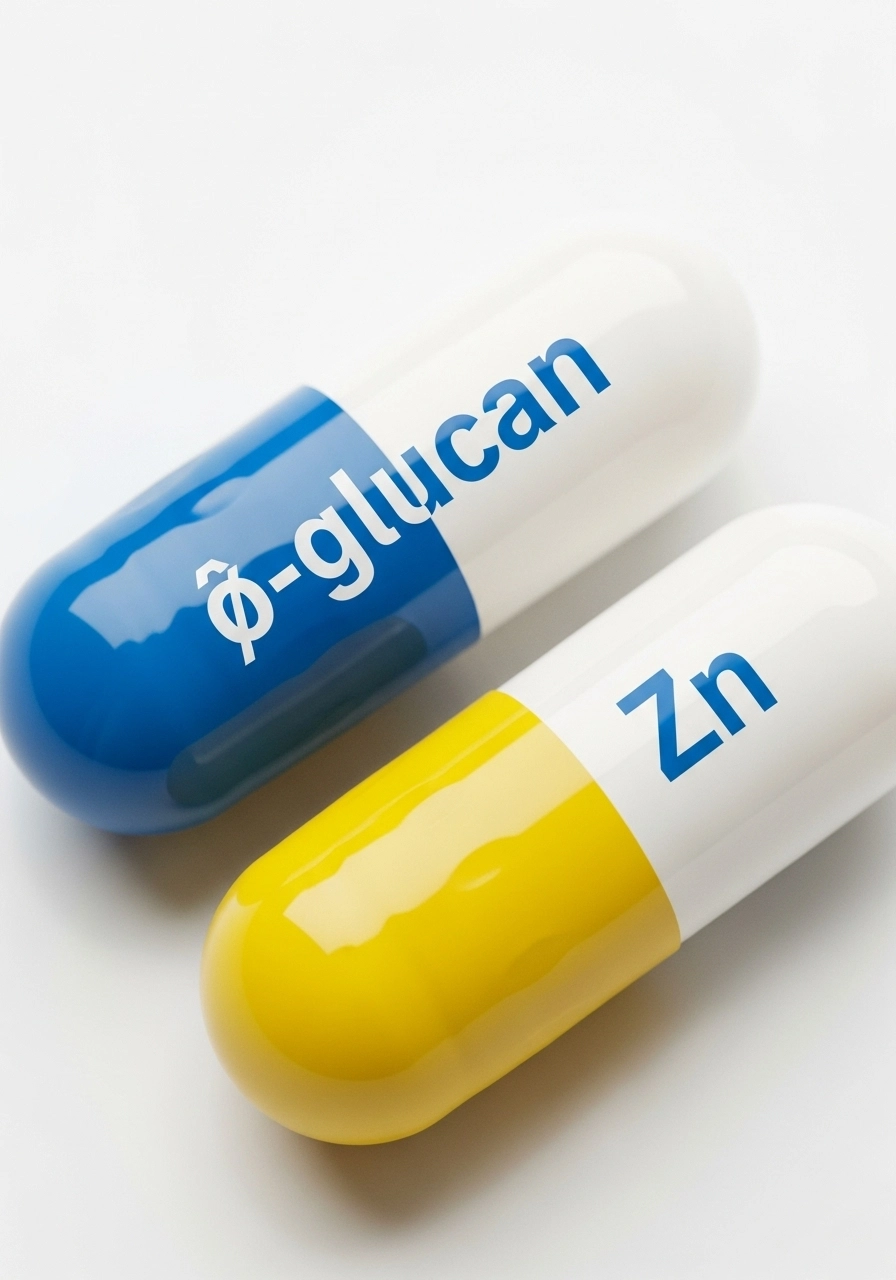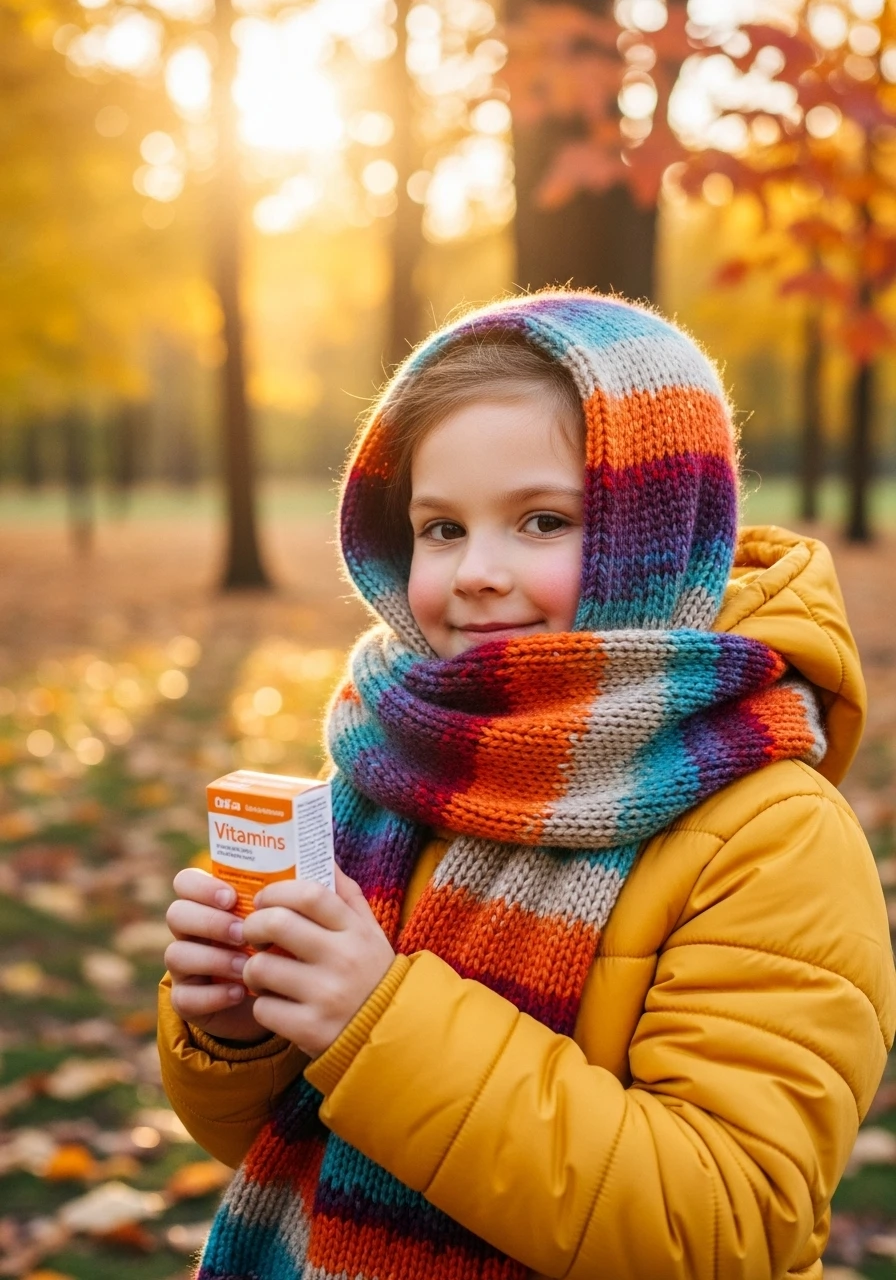

Introduction: Why It’s Important to Support Immunity in Autumn
Early autumn is a period when the body transitions from the summer to the colder season.
Less sunlight, more time spent indoors, and the season of colds and viruses.
During this time, the immune system works under increased stress, especially in children, students, and individuals with chronic conditions.

At Vitafoods Europe 2025, the combination of beta-glucans and zinc was discussed as a separate topic, recognized as one of the most promising for preventing frequent infections.
The focus is on β-1,3/1,6-glucans from mushrooms and oats combined with bioavailable forms of zinc (picolinate, gluconate, citrate).

What Are Beta-Glucans and How They Work
Beta-Glucans are natural polysaccharides found in the cell walls of mushrooms (Saccharomyces cerevisiae, Pleurotus ostreatus), oats, and barley.
Mechanism of Action:
-
-
Activate macrophages and natural killer (NK-cells)
-
Enhance antibody production
-
Act as immune trainers — increase the readiness of the immune system to respond to pathogens
-
📌 A study by Vetvicka et al. (2019) showed that taking β-1,3/1,6-glucansfor 90 days reduced the incidence of acute respiratory infections in children by 25–40%.

Zinc: Role in the Immune Respons
Zinc is a trace element essential for:
-
the synthesis of immunoglobulins
-
the maturation and function of T-lymphocytes
-
the protection of mucous membranes from infections
Zinc deficiency leads to frequent colds, slow wound healing, and increased fatigue.
📌 A meta-analysis by Singh & Das (2011) showed that taking zinc at the onset of cold symptoms shortens its duration by 1–2 days.
Table 1. Sources of Beta-Glucans and Zinc
| Source | Type of Beta-Glucans / Form of Zinc | Features |
|---|---|---|
| Mushrooms Pleurotus, Shiitake | β-1,3/1,6-Glucans | Powerful immunomodulatory effect |
| Baker’s yeast | β-1,3/1,6-Glucans | Standardized supplements |
| Oats, barley | β-1,3/1,4-Glucans | Also reduce cholesterol |
| Zinc picolinate | — | High bioavailability |
| Zinc gluconate | — | Well tolerated |
| Zinc citrate | — | Optimal for prevention |

Why the Combination of Beta-Glucans and Zinc Works Better
-
Beta-glucans trigger the immune response
-
Zinc supports immune cells and accelerates recovery
-
Together they act synergistically: reducing the risk and duration of infections, especially in high-risk groups (children, elderly, athletes)
Table 2. Intake Recommendations
| Group | Beta-Glucans (standardized extract) | Zinc (elemental) | Course |
|---|---|---|---|
| Adults | 250–500 mg/day | 10–15 mg/day | 8–12 weeks |
| Children 6–12 years | 100–250 mg/day | 5–10 mg/day | 8–12 weeks |
| Athletes | 400–600 mg/day | 15–25 mg/day | During periods of intensive training |
Practical Recommendations
-
Choose beta-glucans with clear standardization for β-1,3/1,6
-
Combined formulas with vitamin C and selenium enhance the effect
-
New trend — gummies with beta-glucans and zinc for children
-
For prevention, it’s best to start the course 4–6 weeks before the cold season
Precautions
-
Excessive zinc intake (>40 mg/day) may cause nausea and disrupt copper metabolism
-
Allergy to mushroom extracts is a contraindication for beta-glucans
-
For children under 3 years — only under a doctor’s recommendation
Список літератури
-
Vetvicka V., Vetvickova J. “β-glucans improve immune status in children with chronic respiratory problems.” J Am Coll Nutr. 2019.
-
Singh M., Das RR. “Zinc for the common cold.” Cochrane Database Syst Rev. 2011.
-
Stier H., et al. “Immune-modulatory effects of β-glucans.” Nutrients. 2014.



